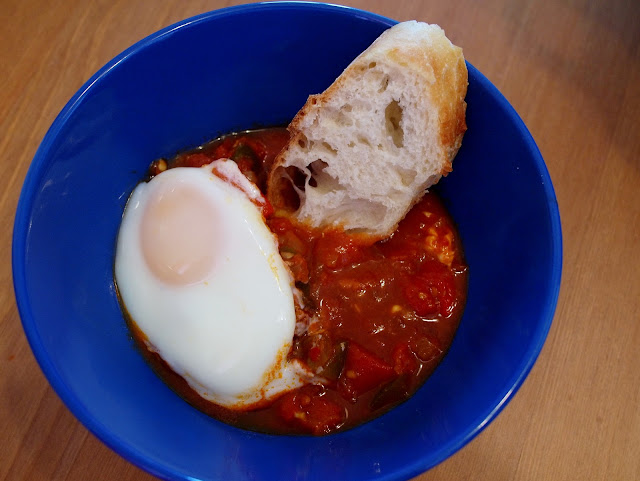Christmas Breakfast is a special meal enjoyed around the world - the belts are not yet too tight from Christmas Dinner and the joy of Santa's arrival is fresh in everyone's mind. But I suspect, even in North America, everyone has their own private tradition. Do you eat before gift-opening or after? Do you just scarf down some cold cereal or have a leisurely hot brunch? In my family Christmas Breakfast was most often celebrated with a rich meal of bacon, eggs and pancakes eaten before gift-opening but after we'd delved into our stockings.
With all this in mind I was eager to delve into the rich traditions enjoyed around the world. Unfortunately for me, there were not enough mornings to try everything out. So after much thought I narrowed it down to two completely different traditions. One European, one Central American. One sweet, and one savoury.
Part One - Guatemala
TAMALE NEGRO
The country of Guatemala is around 50-60% Roman Catholic and Christmas is one of their major holidays. Celebrations include Christmas Mass, decorations, fireworks (!), and lots of tamale-making. Similar to the Chinese tradition of dumpling making for the Chinese New Year, Guatemalans take advantage of the extra time and family (aka free labour) to make lots and lots of the time-consuming tamale.
"A dish containing Masa (corn-based dough) which is steamed or boiled in either Banana Leaves or Corn Husks. It can be filled with any number of sauces, meats, cheeses, or vegetables."
Now of course, Tamales are eaten all year round in Guatemala, but for Christmas they make a special one called Tamales Negro (or Black Tamales). I'm not sure of the significance of this Tamale, except perhaps that it's sauce is chocolate-based and together with toppings like raisins and plums this Tamale is just a little bit sweet (and hence, suitable for Christmas morning).
People were not kidding when they described Tamales as time-consuming. Even with Jon's generous help, this breakfast probably took close to 5-6 hours to prepare. We began in the evening, preparing the dough, sauce and fillings, and assembling the Tamales. This left only the 90 minute steaming process for the morning.
The dough we prepared with the classic Maseca mix, lots of butter, sugar and some water on the stovetop.
Here it is after being kneaded into a nice dough. It's warm, soft, and tastes like ground up tortillas.
The filling was a bit more tricky. It was made from scratch with pumpkin seeds (pepitas), sesame seeds, chili peppers, tomatoes, bittersweet chocolate, pork and a few spices. The seeds had to be roasted, the chili peppers rehydrated and roasted, the chocolate melted and everything blended into a smooth sauce. Once that was complete we added the pork (which we had already cooked).
Next we had to deal with the Banana Leaves. We had bought a huge pack frozen from Kensington Market but really had no idea how to use them. We did our research and saw that to prevent from breakage it helps to boil frozen banana leaves before use. So we tried that and our apartment promptly smelt like banana tea! The leaves did seem more pliable but breakage was definitely still an issue. Good thing the pack came with 200 feet of banana leaves...
To pack a tamale: clear a nice space, lay down your banana leaf, top with around one cup of Masa, squish firmly to around 1/4 inch, place your toppings (raisins, olives, plums, etc). Now ladle one spoonful of the sauce and carefully lift the edges of the tamale toward the middle to seal the filling into the Masa. Here comes the tricky part: without breaking the banana leaf, fold it into a neat package and tie with some string to secure. Sounds easy, looks easy on-line, but is not easy in person!
In the morning we simply steamed the tamales for around 90 minutes, opened and enjoyed. Well, Jon enjoyed. Me not so much. Which was highly disappointing after all that effort. The sauce tasted okay and the pork was definitely tender. I think it was the Masa which I didn't like. It had taken on flavour from the banana leaves (which I think is probably the point) and I just didn't dig it. It tasted a lot like green bananas, which is a flavour I usually like, just not mixed with corn and pork...
The Verdict:
For Ease of Preparation:

Not easy.
For Degree of Separation:

If I could give this six Cheerios I would.
For Guestability:
Very subjective, Tamale breakfast could be fun.
For Sustainability:

For Overall Appeal:

I would be willing to try Tamales again - the process was fun and they might be great to serve at a dinner party. I would just vary it up - maybe try it with corn husks and a different filling. Really when you think about it, the combinations could be endless: Trini Curry Tamales, General Tsao Tamales, Thai Green Curry Tamales, Iranian Fesenjan Tamales....
Next Breakfast we eat the baby Jesus in bread-form!




















